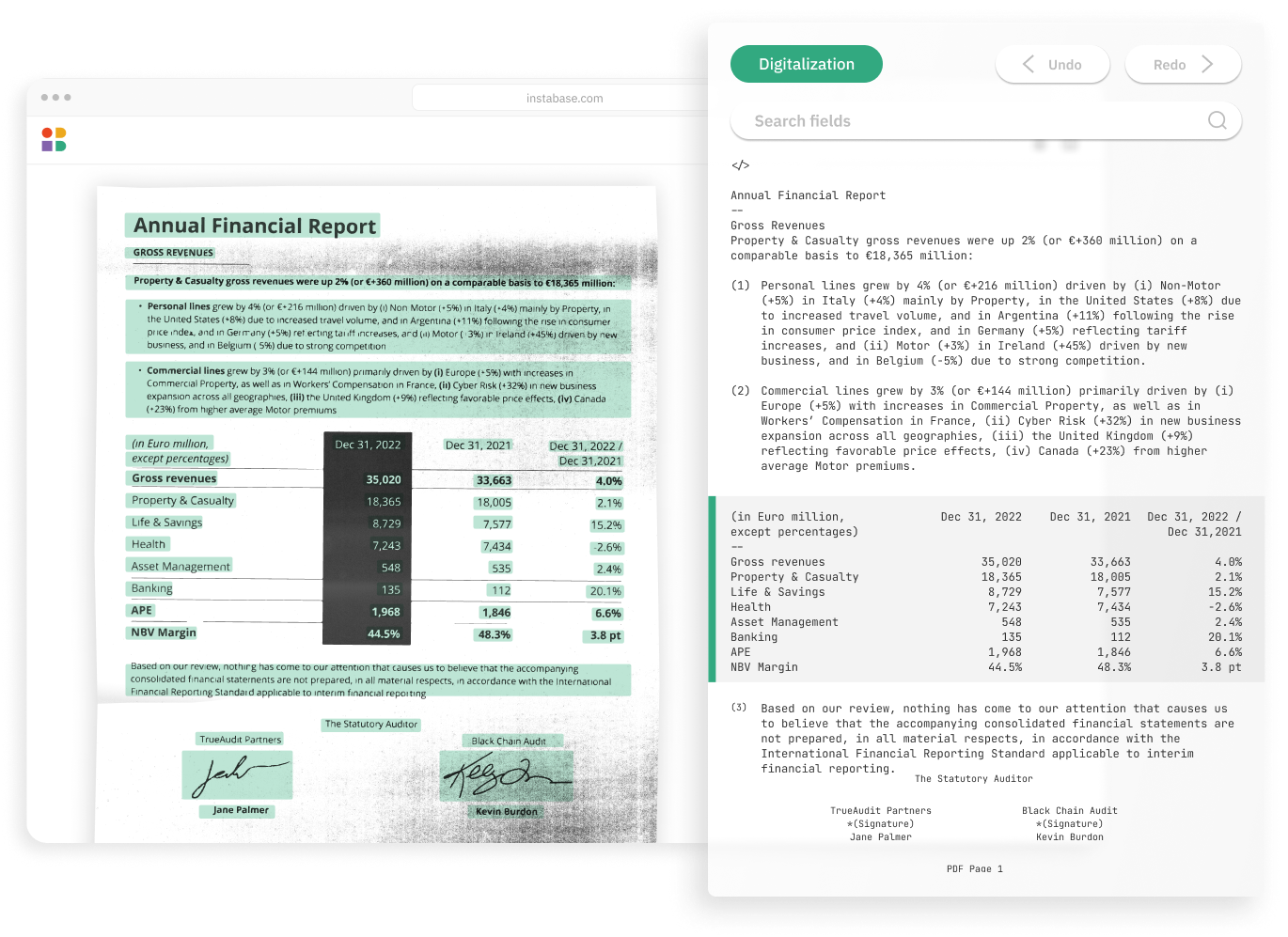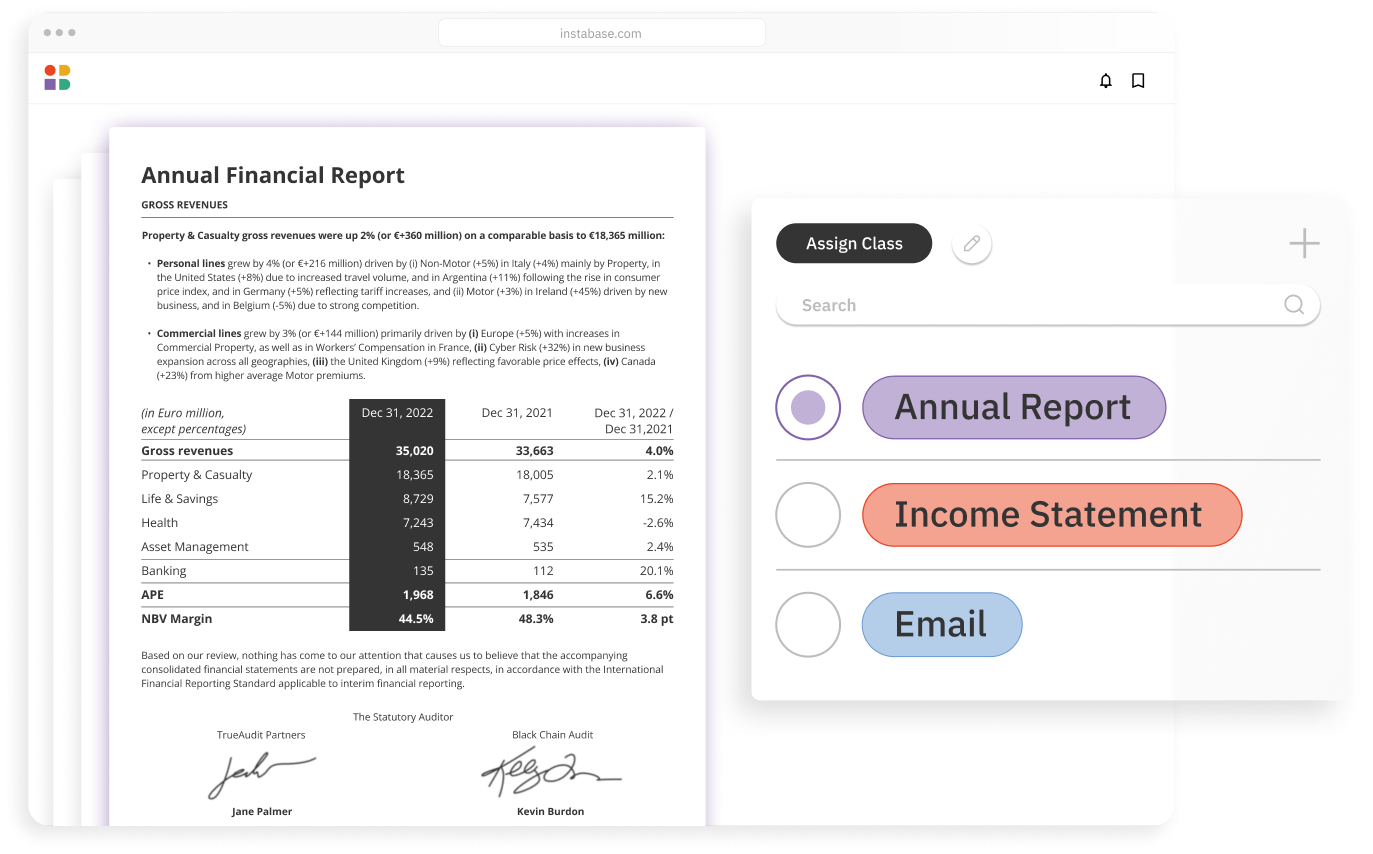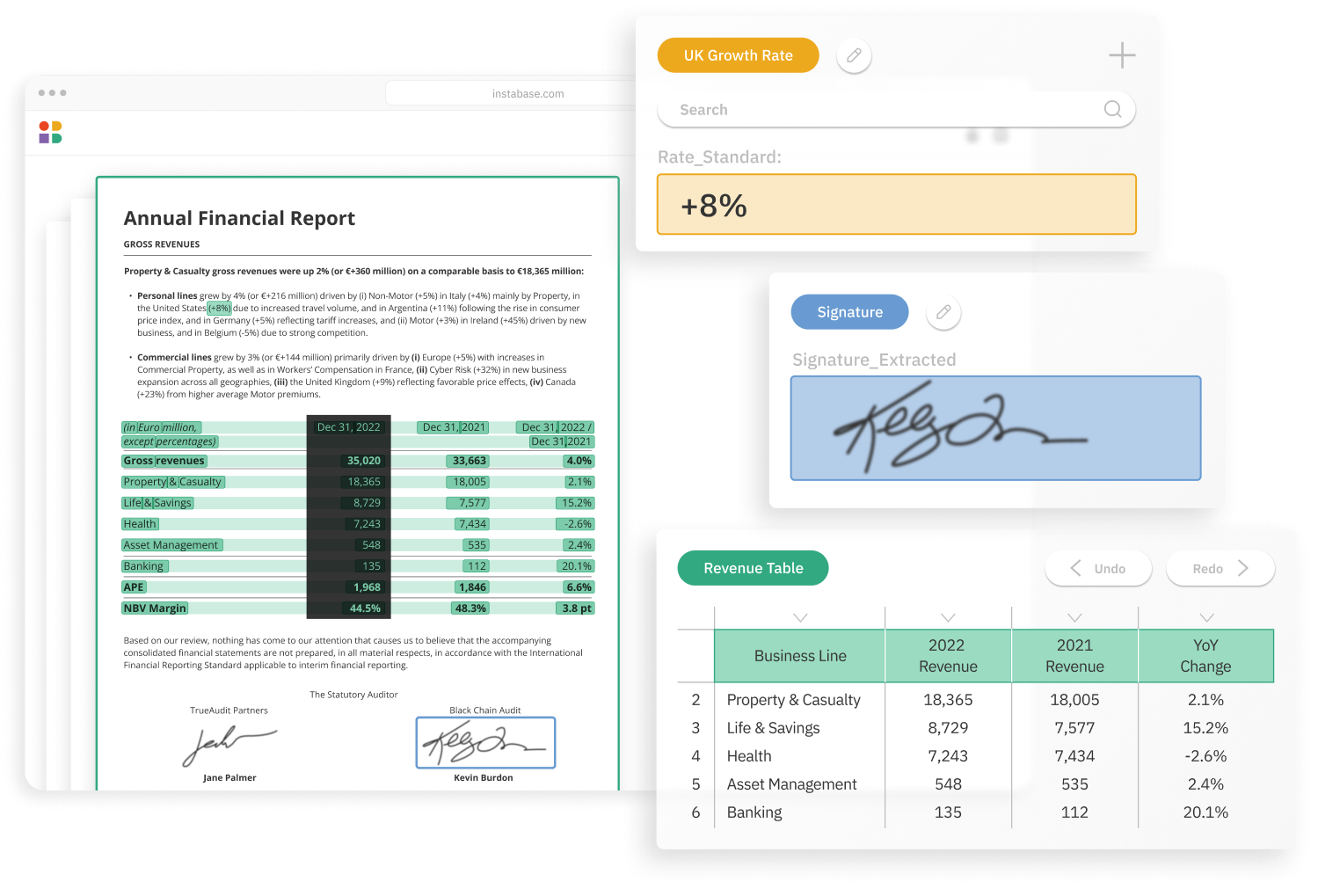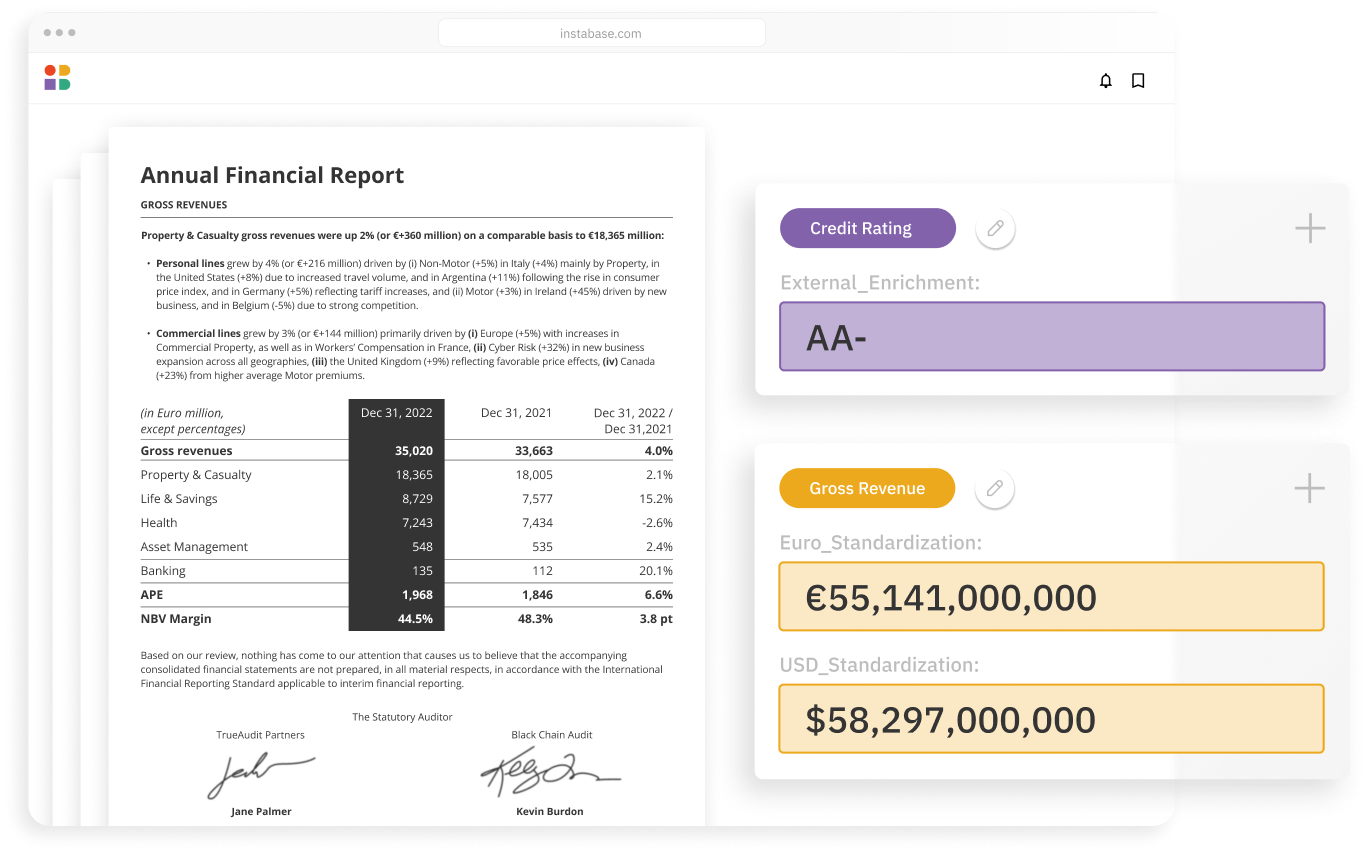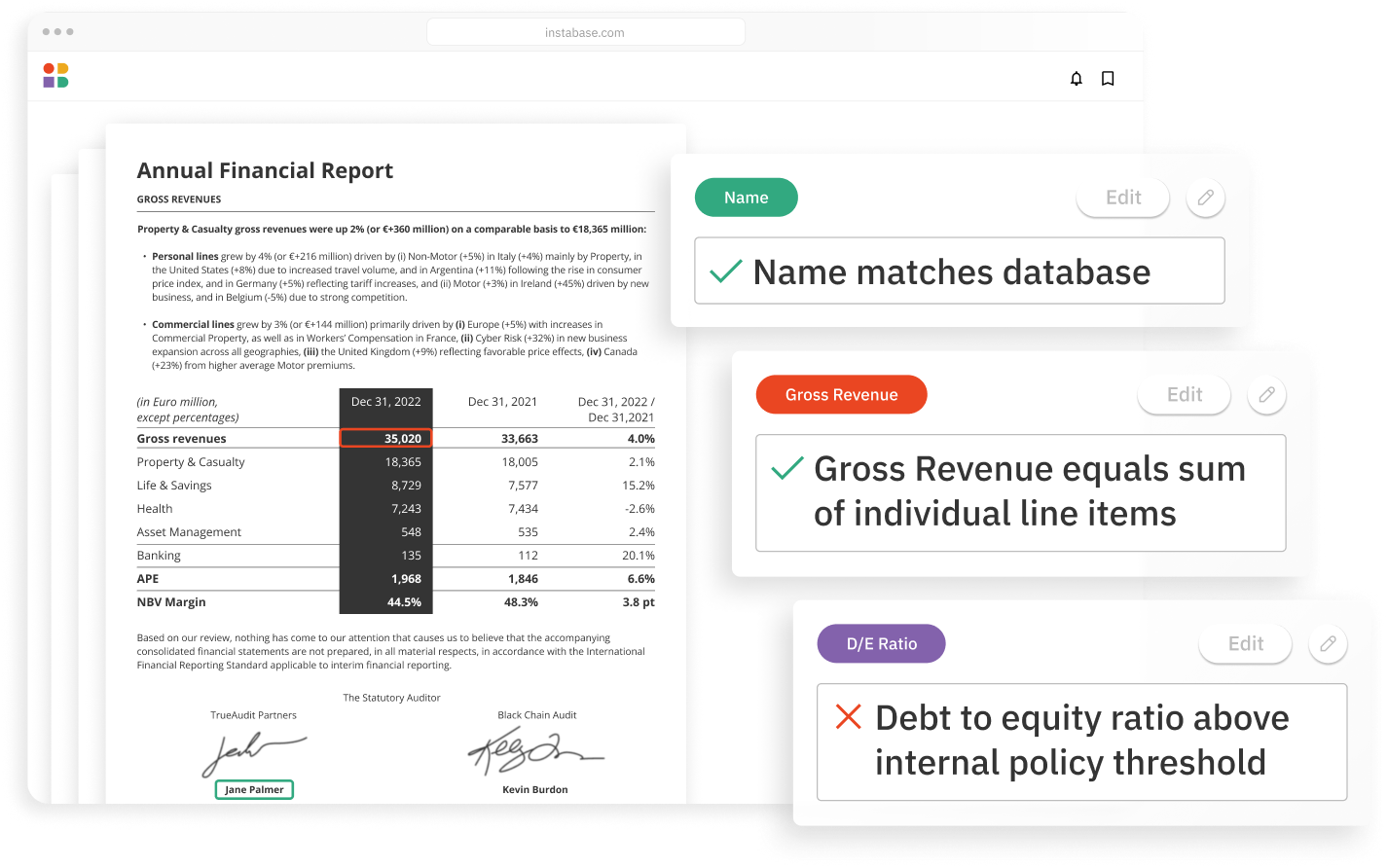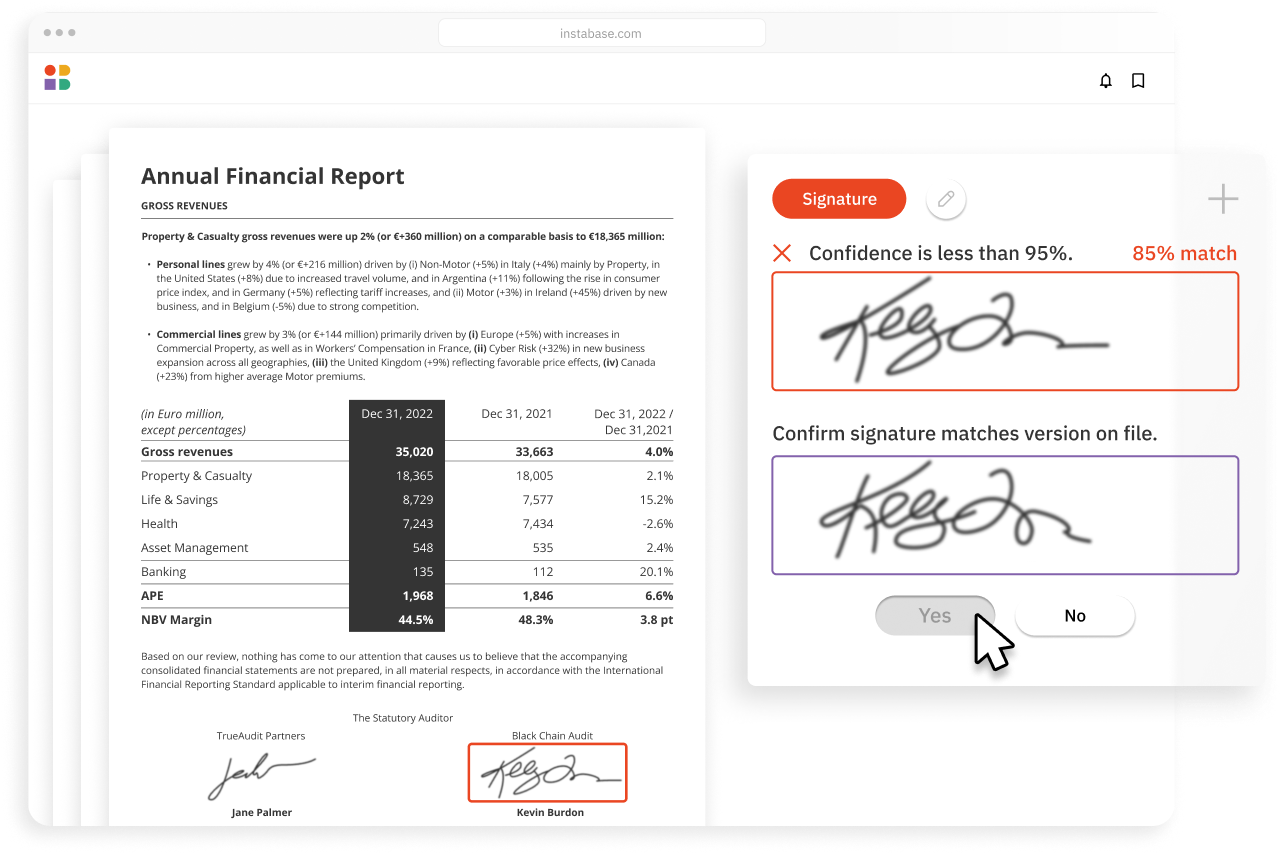Loss Runs are complex tables containing the claims history on a business line basis. These documents can come in any file format (e.g. PDF or Excel) and are highly variable in structure due to the large number of carriers involved. As a result, these documents usually require manual processing, a tedious and time-consuming job.
Instabase for Client Onboarding
Instabase automates document understanding for loss run tables, streamlining end-to-end workflows.

Processing Loss Runs
Why Instabase?
The Instabase Automation Platform for Unstructured Data automatically extracts relevant data out of loss run tables, automating an end-to-end workflow that improves underwriter capacity, cycle time, and customer service.
Unlock unstructured data that others can’t
Understand your most complex documents with the latest in AI from Instabase and the broader market
Achieve unrivaled automation & accuracy
Minimize errors and boost automation with an extensive suite of validations and business logic
Build solutions 10x faster
Launch end-to-end solutions in days with low code building blocks for every step in your workflow
How it works
Instabase combines the most powerful technologies for every step of the process, so you can automatically understand any document in the submissions process.
